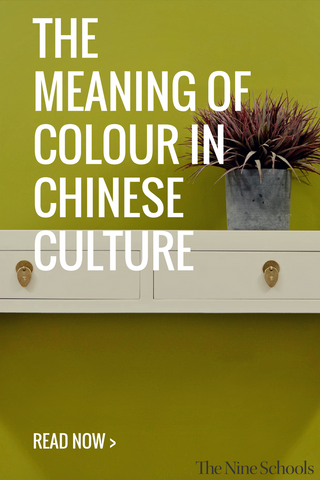When it comes to oriental interiors, simplicity, tradition and peacefulness are key. Traditionally, rooms are designed with the principles of Feng Shui in mind - but to truly embrace the culture in your decor, it's also important to understand the role that colour has to play. Colour symbolism is far more important in oriental cultures than it is here in the west. Their colour theory is based on the five elements - Earth, Fire, Metal, Water and Wood - which play an equally important part in Chinese culture. Here's what the five most important colours mean in China.

Earth - Yellow
Traditionally, yellow is a strong colour: it represents prosperity, royalty and power. However, in modern times it has come to represent pornography. In your interior design, consider using gold instead - it also symbolises prosperity, and gilt touches are popular in Chinese furniture, as in this sideboard.
Fire - Red
The colour red has a multitude of meanings in Chinese culture: happiness and luck, as well as fertility, vitality and celebration. You'll often see the colour used in traditional lacquered cabinets, normally combined with black.
Metal - White
As in the UK, white represents purity in China. It's a colour that works well if you're looking for oriental interiors inspiration, as it's perfect for giving that feeling of simplicity. Try something like this console table to incorporate the colour, but be careful as white can also be associated with funerals.
Water - Black
Often, the colour black has negative connotations - it's associated with evil, sadness and suffering - much like in the western world. However, just like in the UK, this symbolism doesn't prevent the Chinese from using it in their interior design, with unique furniture like this decorated trunk adding a stylish and sophisticated touch.
Wood - Blue
Advancement and immortality are represented by the colour blue - and it's a colour that, in the western world, is associated with being soothing and peaceful. For these reasons, it's the perfect colour for bedrooms. Pieces such as this decorated cabinet are ideal for your sleeping space.
There are other colour symbolisms not represented by the five elements too, such as green for cleanliness (but also infidelity), and purple for love or royalty.
What does this all mean for Chinese-inspired interior design? Choose your colours wisely. While accents or small elements of your decor in certain colours may be ok, bear their symbolism in mind - an all-white bedroom may not be the most auspicious choice.

